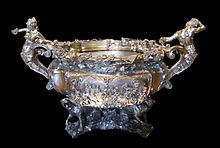
The Jerningham wine cooler is a large wine cooler made out of silver in the 18th century.

The Jerningham wine cooler is a large wine cooler made out of silver in the 18th century.
The original was commissioned 1734–1735 in London by Henry Jernegan (Jerningham) of Russell Street, a London goldsmith-banker, whose client, Littleton Poyntz Meynell, wanted to have the largest silver wine cistern ever to have been made. Jernegan employed the sculptor John Michael Rysbrack to model the Bacchanalian scenes on the bowl, the crouching panthers beneath and the satyr handles. It took a team of silversmiths, chasers and engravers four years to make and weighed 8,000 ozs. The leading silversmith, whose mark is struck on the cistern, was the German immigrant, Charles Kandler (probably Carl Rudolf Kaendler, elder brother of the famous Meissen porcelain modeller). When asked by Henry Jernegan to pay the final bill for the cistern, however, Meynell refused and in 1737, Jernegan offered the cooler as a lottery prize. The smallest prizes in the lottery were specially struck medals about five or six shillings each. The winner, Major William Battine of East Marden, Sussex, appears to have sold the cooler to the regent Grand Duchess Anna Leopoldovna of Russia in 1738. Since 1743 the cooler has been in the Hermitage Museum, St. Petersburg.
An electrotype (silver on copper core) copy was made during the Victorian Age in 1884 in Birmingham by Elkington & Co. in celebration of the original. This copy (see photo) is now located in the Victoria and Albert Museum. There is another electrotype copy in the Metropolitan Museum in New York, and also in the Queen's Regimental Silver in England.
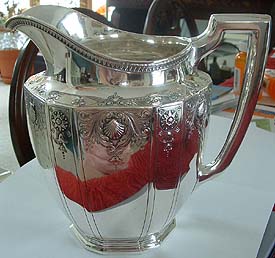
Sterling silver is an alloy composed by weight of 92.5% silver and 7.5% other metals, usually copper. The sterling silver standard has a minimum millesimal fineness of 925.

A silversmith is a metalworker who crafts objects from silver. The terms silversmith and goldsmith are not exact synonyms, as the techniques, training, history, and guilds are largely the same but differed in that the end product may vary greatly.

A medal or medallion is a small portable artistic object, a thin disc, normally of metal, carrying a design, usually on both sides. They typically have a commemorative purpose of some kind, and many are presented as awards. They may be intended to be worn, suspended from clothing or jewellery in some way, although this has not always been the case. They may be struck like a coin by dies or die-cast in a mould.

Costessey is a town and civil parish in the South Norfolk district of Norfolk, England, and is 4 miles (6.4 km) north west of Norwich. The civil parish forms part of the Norwich Urban Area.
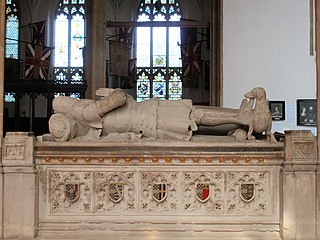
Sir Robert Drury (1456–1536) was an English knight, Lord of the Manor of Hawstead, Suffolk, and Knight of the Body to Kings Henry VII and Henry VIII. As a politician he was Knight of the Shire for Suffolk, Speaker of the House of Commons, and Privy Councillor. He was also a barrister-at-law. His London townhouse was on the site of today's Drury Lane.
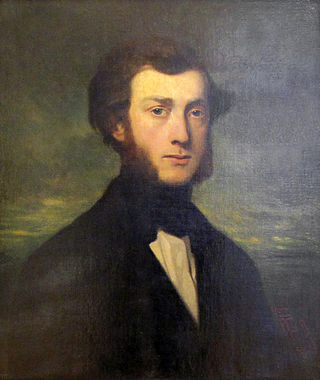
Léonard Morel-Ladeuil, French goldsmith and sculptor, was born at Clermont-Ferrand.

Electrotyping is a chemical method for forming metal parts that exactly reproduce a model. The method was invented by Moritz von Jacobi in Russia in 1838, and was immediately adopted for applications in printing and several other fields. As described in an 1890 treatise, electrotyping produces "an exact facsimile of any object having an irregular surface, whether it be an engraved steel- or copper-plate, a wood-cut, or a form of set-up type, to be used for printing; or a medal, medallion, statue, bust, or even a natural object, for art purposes."
Sir Anthony Kingston was an English royal official, holder of various positions under several Tudor monarchs.

Thomas Germain (1673–1748) was the pre-eminent Parisian silversmith of the Rococo.
The Harache family is a family of goldsmiths of Huguenot extraction, many of whom came to London from France towards the end of the 17th century to avoid persecution. They were responsible for some of England’s most important silversmithing of the time. The family was active in the production of silver plate in London for about a hundred years.

The Warwick Vase is an ancient Roman marble vase with Bacchic ornament that was discovered at Hadrian's Villa, Tivoli about 1771 by Gavin Hamilton, a Scottish painter-antiquarian and art dealer in Rome, and is now in the Burrell Collection in Glasgow in Scotland.

Peter Archambo I (1699–1759), in his time Peter Archambo, was a Huguenot silver- and goldsmith. He was the English-born son of the Huguenot refugee Archambault family from France. In 1710 he was apprenticed to the notable Huguenot goldsmith Jacob Margas.
Mary Scrope was an English courtier. She was the granddaughter of Henry Scrope, 4th Baron Scrope of Bolton, and the sister of Elizabeth Scrope, wife of John de Vere, 13th Earl of Oxford, and Margaret Scrope, wife of Edmund de la Pole, 3rd Duke of Suffolk. She is said to have been in the service at court of King Henry VIII's first four wives. As the wife of Sir William Kingston, Constable of the Tower of London, she was in attendance on Anne Boleyn during the Queen's brief imprisonment in the Tower in May 1536, and both she and her husband were among those who walked with the Queen to the scaffold. By her first husband, Edward Jerningham, she was the mother of Sir Henry Jerningham, whose support helped to place Queen Mary I on the throne of England in 1553, and who became one of Queen Mary's most favoured courtiers.
Sir Henry Jerningham KB was an English courtier during the Tudor period. He was a Gentleman Pensioner during the reign of Henry VIII. In the succession crisis of 1553 he was one of the foremost supporters of Mary Tudor, and after her accession was one of her most trusted servants, being appointed Vice-Chamberlain of the Household, Captain of the Yeomen of the Guard, and a member of the Privy Council.
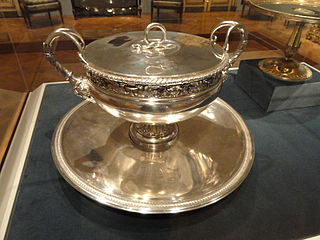
Henri Auguste (1759–1816) was a leading Parisian gold- and silversmith, working in the neoclassical style. In cooperation with the sculptor Jean Guillaume Moitte, who provided him with designs and models, he became one of the leading designers of Empire style in orfèvrerie, a rival of Jean-Baptiste-Claude Odiot and Martin-Guillaume Biennais.
A cliché coin forgery is a type of counterfeit coin produced using a genuine coin to impress a design into silver foil. Evidence of the probable manufacturing technique are finds of small lead sheets with multiple coin impressions and also fragments of impressed foils or complete 'coins'. The process seems to have involved the following steps. First, sandwiching a genuine coin between a fold of foil, generally silver, with a thickness of 50-100 microns. This was then placed between lead sheets and the pile struck with a hammer. This resulted in the foils taking an impression of each face of the coin simultaeously, also incidentally transferred to the lead sheets. The folded foil was then removed and the resulting obverse and reverse impressions were then simply soldered together, usually with tin-lead solder. The final sandwich was then trimmed to size, possibly with a 'pastry cutter' type tool, forming a circular coin.
Edward Twycross (1803–1852) was a Dublin silversmith, solicitor, and author who in 1847 published a book, "The Mansions of England and Wales," that is used as a historical reference for the stately homes of England and in tracing genealogies of members of the British aristocracy.
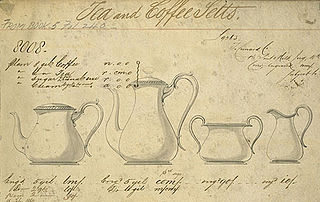
Elkington & Co. was a silver manufacturer from Birmingham, England.
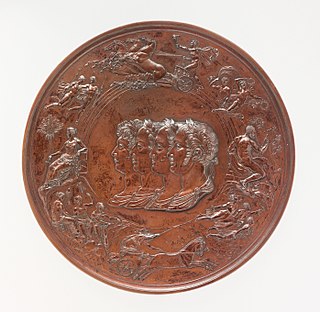
The Waterloo Medal was designed by Italian-born sculptor Benedetto Pistrucci. He worked on it from 1819 to 1849, when the completed matrices were presented to Britain's Royal Mint. The medal was commissioned by the British Government in 1819 on the instructions of the Prince Regent ; copies were to be presented to the generals who had been victorious in the 1815 Battle of Waterloo, and to the leaders of Britain's allies. As most of the intended recipients had died by 1849, and relations with France had improved, the medals were never struck, though modern-day editions have been made for sale to collectors.
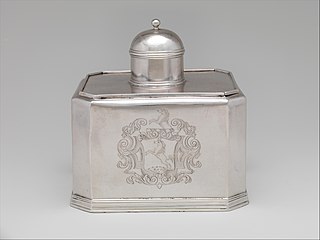
Simeon Soumaine was a noted Huguenot-American silversmith, active in New York City.